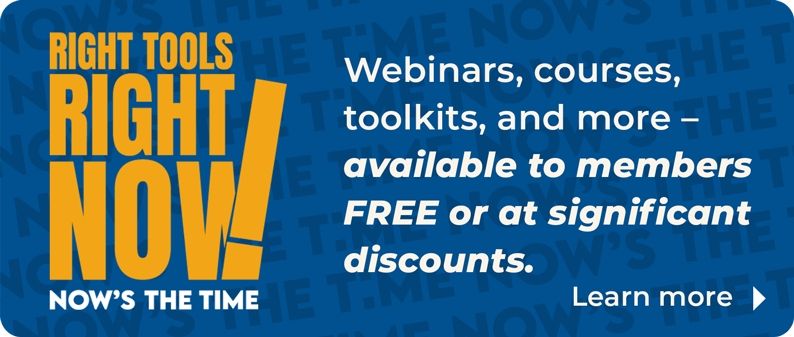Redlining became official United States policy under the National Housing Act of 1934 and the concurrent creation of the Federal Housing Administration. In this era of rampant racial segregation and discrimination against people and communities of color, cities were mapped and areas considered the riskiest for mortgages were outlined in red.
The worst economic impact of redlining — which also made it difficult to insure or sell a home within those boundaries — fell on people of color. Between 1945 and 1959, African Americans received fewer than two percent of all federally insured home loans, as documented by several late 20th and early 21st century researchers. Banks not only denied investment in the redlined areas — cities also failed to pave streets, provide streetlights, collect trash, and provide other municipal services. Because Black Americans were typically restricted from living in other parts of cities by racially restrictive covenants and other mechanisms, redlined areas often became extremely overcrowded, with residents living in substandard housing, lacking indoor plumbing and other basic amenities. Any ability to build wealth through housing was severely curtailed.
Just as modern research is documenting the rapid urban decay and racial disparity of redlining, the latest data and mapping tools are underscoring present-day tax assessment practices that are unfairly burdening urban core properties while under taxing affluent properties in the suburbs and outskirts.
Joseph Minicozzi, AICP, is the principal of Urban3 based in Asheville, N.C. The urban planner founded his firm to imagine new ways to think about and visualize land use, urban design and economics. Urban3 has become somewhat famous for crunching heavy data to create maps that illustrate everything from the untapped value of urban land to disparity in taxation practices.
While juggling a national practice with more than a dozen expert staffers, Minicozzi has been aggressively researching practices in his home county. Data has shown that Buncombe County, N.C., unfairly taxes property in poor areas and also misses out on a fortune in untaxed residential value, due to structurally flawed tax assessment methods.
“Our research suggests that there are long-standing racial inequities in property tax administration that place unfair financial burdens on communities of color. These disparities may have impacts on housing affordability, gentrification, displacement, household economics, and ultimately a driver of community health disparities,” states the Urban3 website section dedicated to this work.
In response to the protests of 2020 following the high-profile, police-involved murder of George Floyd and in acknowledgement of the wealth-robbing impact of redlining, an “urban renewal” program that destroyed Black homes and a thriving Black business district and other city policies that destroyed Black wealth, the city of Asheville and Buncombe County adopted reparations ordinances. Though one dedicated hundreds of thousands of dollars to addressing inequity, Minicozzi found the county’s basic tax-assessing methodology was widening disparity. His research found Buncombe was over-taxing the poor by at least $1.5 million and under-taxing the rich by $4 million each year — producing at least $5.5 million in annual inequity.
Minicozzi compared a 720-square-foot house in the predominantly Black Shiloh neighborhood, to the spacious home of an infamous attorney in Biltmore Forrest, a virtually all-White, affluent, golf course community developed around the Biltmore Estate by the Vanderbilt family just across the street from Shiloh. The modest Shiloh home is valued at $125 per square foot while the estate home is valued at $107 per square foot. And the county’s tax rate per acre on the small home is $4,604 — but the house in the exclusive enclave enjoys a lower rate of $3,781 per acre.
The unfair disparity is starkly apparent when Minicozzi found the tiny dwelling’s assessed value jumped 266 percent from 2017-2021, but the roomy dwelling in the luxury community went up only 126 percent in the same time period. Making things even more unequal, the pricy house enjoyed a much lower assessment hike despite major renovations, while the tax-burdened tiny house had zero upgrades.
“There is no way you could look at the data and see that this is reasonable, fair or equitable,” Minicozzi said. “The thing about [practicing] class bias and race bias is when that’s all you do, you don’t know you are wrong. “Tax assessors are not bad people, but they are operating off old standards and habits, they are reticent to change and they under value the wealthy [residences] because they are terrified of wealthy people.”
Data Highlights Affordable Housing Challenges
Chris Collier is the Alliance for Housing Affordability program manager for the Housing Authority of Snohomish County in the northern reaches of the Seattle metropolitan area. With soaring house prices experienced from California to the Pacific Northwest, he has calculated that to buy a single-family home in Snohomish County, a household must earn $156,000 per year.
Collier said part of the problem is expensive housing and a scarcity of quality affordable housing. But to get the big picture of inequity, he said policymakers must study the things that limit people from earning enough to be competitive in the homeownership market.
“Households with a person with a disability have lower income earning ability, people with limited English-speaking capability, females in a system where the glass ceiling still exists, seniors on fixed income — all of those elements lower a household’s earning potential,” he said. “People with disabilities have much higher medical and related bills — data proves it. That shouldn’t remove them from having the ability to own a home.”
Collier is a fan of cities, counties and states that have or are considering abolishing single-family housing ordinances and allowing at least low-density, low-rise multifamily housing in those formerly exclusionary and monocultured zones.
“The king’s share of land is reserved for single-family housing,” he said. “People ask if zoning is discriminatory, and I say ‘of course it is.’ It’s constraining our ability to provide adequate housing for all different types of backgrounds.”
Collier said, adjusted for inflation, data shows the cost of housing in Snohomish County shot up more than 50 percent in the past two decades, while median household income rose less than 10 percent.
More and more people are renting out of necessity and many of those people are disabled, immigrants, or minorities.
“More and more people are renting out of necessity and many of those people are disabled, immigrants, or minorities. Their rents are rising at a pace far faster than their income,” he said.
Collier said statistics show that some of these people will have to move farther from jobs to find affordable rent, or some could go homeless.
“People of lesser means are being financially disadvantaged — paying more for far less plus having no equity that they can take with them when they leave. They will carry that financial burden for their entire life,” he said.
Kyoko Matsumoto Wright is a REALTOR® with Coldwell Banker Bain and mayor of Mountlake Terrace, a Snohomish County bedroom community of about 20,000 people located 13 miles from Seattle.
In her position as mayor and in her job as a marketer of homes, Matsumoto Wright is seeing numbers that are pricing people out of housing. Before interest rates rose, it was not uncommon to see residential listings selling for more than $200,000 over the asking price. She sold a relatively modest home, listed at $615,000, for $807,000. While those stats look great for sellers and their REALTORS®, Matsumoto Wright is gravely concerned.
“I’m going to be the voice telling cities you’re going to have to rezone this and add density. Cities are fighting a lot of this stuff, but otherwise, nothing will be available to the majority of families,” she said. “I’d love to get rid of single-family housing [zoning], but I also know that politically, that is difficult.”
Mountlake Terrace is getting a light rail station and while that is raising prices, it also can create opportunity, in the vision of Matsumoto Wright — who serves or has served on local, regional and statewide affordable housing boards.
“We have to put density in our city because of the light rail station. Around the station, along the freeway that the rail line will hug — we have to make it all multifamily,” said Matsumoto Wright, reminding that density does not equal skyscraper height. “I’d love to allow all single-family zones to allow duplexes and ADUs (Accessory Dwelling Units), at least. The issue is the older people, who have been here 40 to 50 years; they like the bedroom community. They vote. The younger, newer people who support a diverse housing inventory; they don’t [vote].”
Research of Large New Data Sets Uncover Inequity
The Virginia Mercury, an independent, nonprofit online news organization, covered the generational negative impacts that African American families are subject to because of inequity in lending. The Mercury reported: “Because homeownership is central to creating wealth, the racial disparities in homeownership represent ‘the bedrock of wealth inequality in America and in Richmond,’ said Heather Mullins Crislip, then president of HOME, which provides classes and counseling for prospective homebuyers.”
The 2020 Mercury report revealed painfully unjust data-proven facts shared by Crislip, noting African Americans:
- Are far less likely than Whites to ever own a home.
- Buy their first home on average nine years later in life than Whites (and thus enjoy less appreciation in value).
- Are more likely to buy a home in a racially segregated area that won’t appreciate as much.
- Often pay more interest or other costs for their home loan.
“All of those things add up over the course of a person’s lifetime and give us this massive wealth inequality,” Crislip, now executive director at The Richmond Forum, told the Mercury.
The Mercury shared U.S. Census Bureau stats and data, which underscored the inequality, that non-Hispanic White households had a median wealth of more than $139,000. “That compared with less than $13,000 for Black households and $20,000 for Hispanic households. A key factor, the report said, is that most non-Hispanic White households owned their homes,” the Mercury stated.
The Markup is a nonprofit newsroom of quantitative journalists that pursue meaningful, data-driven investigations. In 2021, the team researched and found racial disparities in federal mortgage data.
People of color continue to be denied mortgages at higher rates than their White counterparts.
The Fair Housing Act of 1968 made it illegal to deny someone housing based on race or other protected categories. Despite the law, The Markup found that people of color continue to be denied mortgages at higher rates than their White counterparts.
“We found that nationwide, Black applicants are nearly twice as likely to be denied conventional mortgages as similarly qualified White applicants,” the report stated. “Latino, Asian/Pacific Islander, and Native American applicants are also more likely to be denied mortgages at higher rates than White ones, even when they have the same financial characteristics.”
Starting in 2019, the federal government began sharing mortgage data used to measure how well applicants manage their debt and how much of the property’s overall value is being financed. Those are two of the biggest factors lenders use before making a home loan. The Markup used the data to show continuing inequity even a half century after The Fair Housing Act of 1968 made it illegal to deny someone housing based on race or other protected categories.
“We found 89 metropolitan areas, spanning every region of the country, where lenders were more likely to deny people of color conventional mortgages than White people with similar financial characteristics,” The Markup reported, when it analyzed local data along with national numbers. “Of the biggest metropolitan areas, Chicago had one of the widest disparities: Black applicants there were 150 percent more likely to be denied than White applicants.”
Despite exhaustive reporting backed by independent expert data analysts, much of the lending industry has disputed The Markup’s findings.
Data Will Measure Effectiveness of Programs to Fight Inequity
The Mortgage Bankers Association (MBA) represents more than 2,200 member companies and is the national association representing all facets of the real estate finance industry. MBA’s Home for All Pledge represents the “industry’s long-term commitment on a sustained and holistic approach to address racial inequities in housing.” The effort to ensure fair, equitable and responsible lending and affordable rental housing for minorities includes place-based Convergence programs. Convergence started in Memphis in 2020 and added Columbus, Ohio, in 2021.
“These initiatives are about getting direct stakeholder input into the design and solutions. These are pilot programs in which we are experimenting with place-based solutions that come from the community. We know what’s been tried hasn’t worked well enough. There’s a 30-point gap in homeownership between White and Black/Hispanic households,” Steve O’Connor, MBA’s senior vice president for Affordable Housing Initiatives, said of Convergence’s role in narrowing that gap. O’Connor said data proves out vast inequity, and the data will be used to produce quantitative and qualitative measures of Convergence Columbus’ success.
“Part of what we’re trying to do is raise awareness around tools in the marketplace now — programs for lenders to advance affordability,” he said. “Think of it like college scholarships that go unused. There are down payment assistance and other programs that consumers aren’t aware of, that even some real estate pros aren’t aware of.”
Tim Corcoran is the director of planning & community resources in the Department of Community Investment for the city of South Bend, Ind.
South Bend hired Urban3 to explore the disparity that happens when cities spend heavily on sprawl-based development rather than focusing on urban infill and supporting the more valuable existing and potential development in the urban core.
“The output of the data showed suburban development doesn’t pay — it’s a potential revenue looser,” Corcoran said. “Our urban areas were generating tremendously more value than suburban areas. “Redlining devalued some urban areas, but the numbers prove that even some of our poorer neighborhoods were generating more value per acre than some of the wealthy areas.”
Corcoran said too many cities believe sprawled growth will help rather than deplete their budgets. Cities create inequity by spending less on core areas viewed as decaying or too poor to spur investment.
To address the inequity, South Bend revamped its zoning ordinance to allow for more Missing Middle housing — duplexes, triplexes, and fourplexes, courtyard apartments, bungalow courts, townhouses, multiplexes, and live/work units — that tends to be more affordable and better at serving diverse communities. In 2021, South Bend won the 15th annual Richard H. Driehaus Award from the Form- Based Codes Institute at Smart Growth America for its new code aimed at addressing housing and investment inequity.
To further repair areas damaged by redlining and lack of private investment dating back to the 1960s, South Bend will grant $20,000 to cover the cost of connecting a property to the main sewer line — for homes built in urban infill areas. Another ordinance prohibits extending new sewer lines to prevent subsidizing sprawl development into the fringe.
Ben McAdams served as mayor of Salt Lake County and in the U.S. House of Representatives and is a senior fellow at the Sorenson Impact Center, housed at the David Eccles School of Business at the University of Utah. The center, with partners, created a “Putting Assets to Work Incubator” to identify, map, and plan uses for underutilized government-owned assets in various cities. McAdams worked with Urban3 to identify $13 billion in underutilized assets, such as city parking lots and obsolete properties, that could be worth up to $45 billion if co-developed with the private sector and Salt Lake City.
McAdams said the housing crisis could be greatly addressed if a combination of affordable and market-rate housing were developed on city sites. He said revenue from other development — where the city would continue to own the land and get a share of the profit plus enjoy revenue from land now on the tax rolls — could fund social services and infrastructure that also could be targeted for closing the wealth and homeownership gap found in cities throughout America.
“Understanding the data can help communities see what they have and how they can use it to solve some of their greatest challenges,” he said.
Health Inequity Revealed
Analyzing ZIP Code and Other Data Exposes Health Inequities and Targets Solutions
Being born in the wrong ZIP code can shorten your life — is the jarring headline in a story about disparity published in The Conversation by Jessica Owens-Young, assistant professor of Health Studies at the American University.
The average life expectancy in the United States is 78.8 years, according to the Centers for Disease Control and Prevention (CDC).
“However, life expectancy varies widely across geography. A child born in Mississippi today could expect to never reach his or her 75th birthday. But a child born in California, Hawaii or New York could expect to live into the early 80s,” Owens-Young wrote.
Owens-Young’s interpretation of data showed that at the neighborhood level, longevity differences are sometimes even more drastic, appearing even when communities are only a few miles apart.
“In Washington, D.C., for example, people living in the Barry Farms neighborhood face a life expectancy of 63.2 years. Yet, less than 10 miles away, a baby born in Friendship Heights and Friendship Village can expect to live 96.1 years, according to CDC data,” she stated.
Owens-Young concludes land use, public policy and civic neglect as causes that leave Black populations without the amenities needed to live long, healthy lives.
“Neighborhoods with large Black populations tend to have lower life expectancies than communities that are majority White, Hispanic or Asian. Such racial differences reflect the places in which different races live, not the individual characteristics of people themselves,” she reveals. “Research shows that Black communities are less likely to have access to resources that promote health, like grocery stores with fresh foods, places to exercise and quality health facilities. This is true even in middle-class neighborhoods.”
Research from the Census Bureau and researchers at Harvard and Brown universities shows children from places that are economically disadvantaged tend to have worse outcomes as adults. Owens-Young reports that research also proves that where local government spending is higher, life expectancies increase among those with lower incomes.
Investments that could improve health behaviors such as increasing exercise opportunities could also increase life expectancy.
“From my perspective of a public health researcher, investments that could improve health behaviors — such as building grocery stores, increasing exercise opportunities and discouraging smoking — could also increase life expectancy,” said Owens-Young, sharing how data can identify ZIP codes and neighborhoods in need of initiatives. “Policies that promote economic prosperity and address the impacts of racial segregation — such as investments in quality education, safe and affordable housing, and improved public transportation — could also help.”
The Robert Wood Johnson Foundation (RWJF) is a foundation focused on access to health care, public health, health equity, leadership and training, and changing systems to address barriers to health. With an endowment of $13 billion, the Princeton, N.J.-based philanthropic organization has been using data to target community-focused grants for decades.
The RWJF’s Place Matters program has looked at health disparities and the impact of racism in dozens of communities.
“When we saw in highly segregated areas, life expectancies in the mid-50s, but in the 80s at an affluent area right next door, we explored community development,” said George Hobor, a senior program officer at RWJF. “We wanted to look at statistics to help us answer the question of how do we best invest in communities that have been disinvested in?”
RWJF’s Place Matters program in Cuyahoga County — home county of Cleveland, ravaged by job loss and housing stock deterioration — funded partnerships focused on eliminating health disparities. The initiative defined health not as the absence of disease, but “where people live, work, learn, age and play. Health includes the social conditions one lives in, such as the jobs we do, the money we’re paid, the schools we attend and the neighborhoods we live in, as well as our genes, our behaviors and our medical care.”
Statistics showed chilling numbers in the city of East Cleveland. Its poverty rate was 32 percent and the heart disease mortality rate was 32 percent higher than that of the nation. Taking a holistic approach, the team hosted two land-use summits focused on the integration of health and equity into land-use planning and community development decision-making.
Hobor noted that people don’t spend their entire day in their home neighborhood, so cell phone data can show where a person spends the day and how that could impact their health.
“During COVID, you could even use cell phone data to see how well distancing was practiced,” he said. “Twitter data can be used, as people develop ways to use it to track eating habits, socializing — combine it with survey results and you get a feel for how geography impacts health.”
Hobor said the connection of geography and local conditions to health can be gauged by ever-emerging ways of gathering data.
“We funded a project in Atlanta looking at hospital admissions for injuries due to violence. We tracked injuries resulting from violence on street, in parks, in public places and compared them to police reports,” he said. “It shows the accuracy of crime reporting. It revealed a gap in reported versus actual incidents. People have an idea of what spaces are dangerous, but with the data — we can chart things to do, we can identify things to fix in a specific area.”
Based on data, RWJF has targeted investments of tens of millions of dollars in community development projects. The grants pay for restoring and empowering areas as small as a single block or half a block. Improved socio-economic standing and access to healthy living has a positive impact on those communities — proven by data.

















